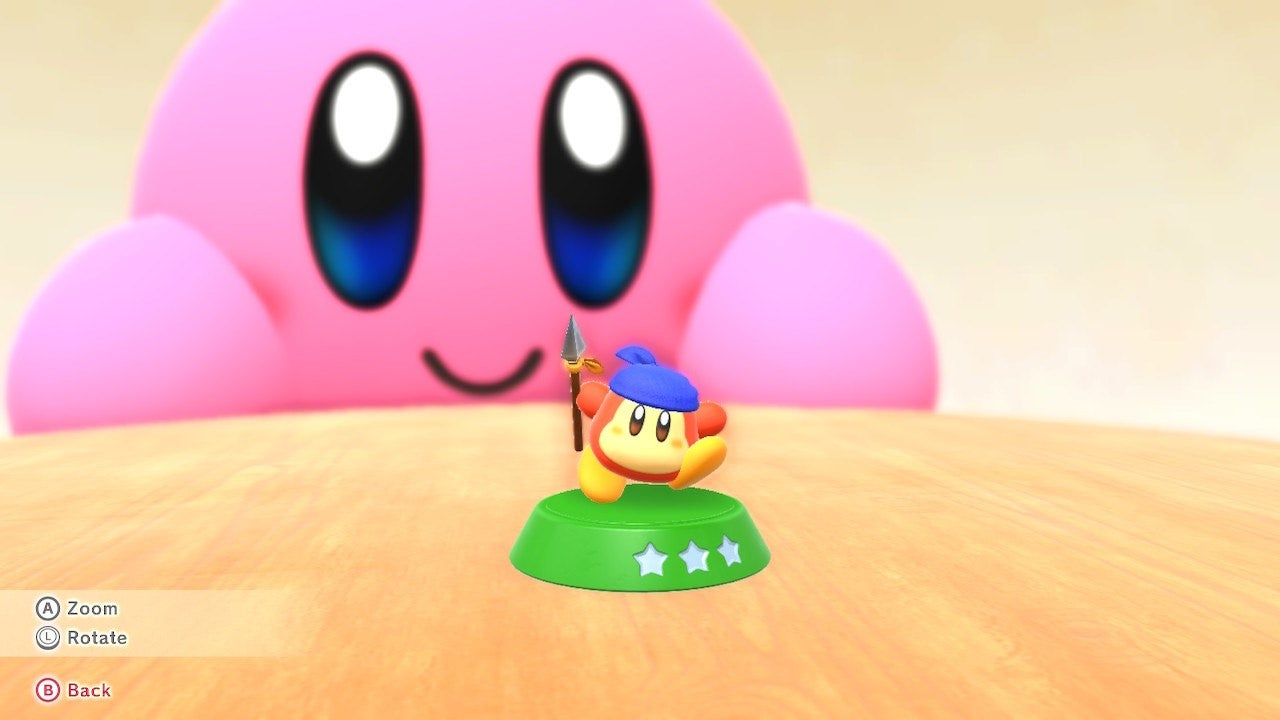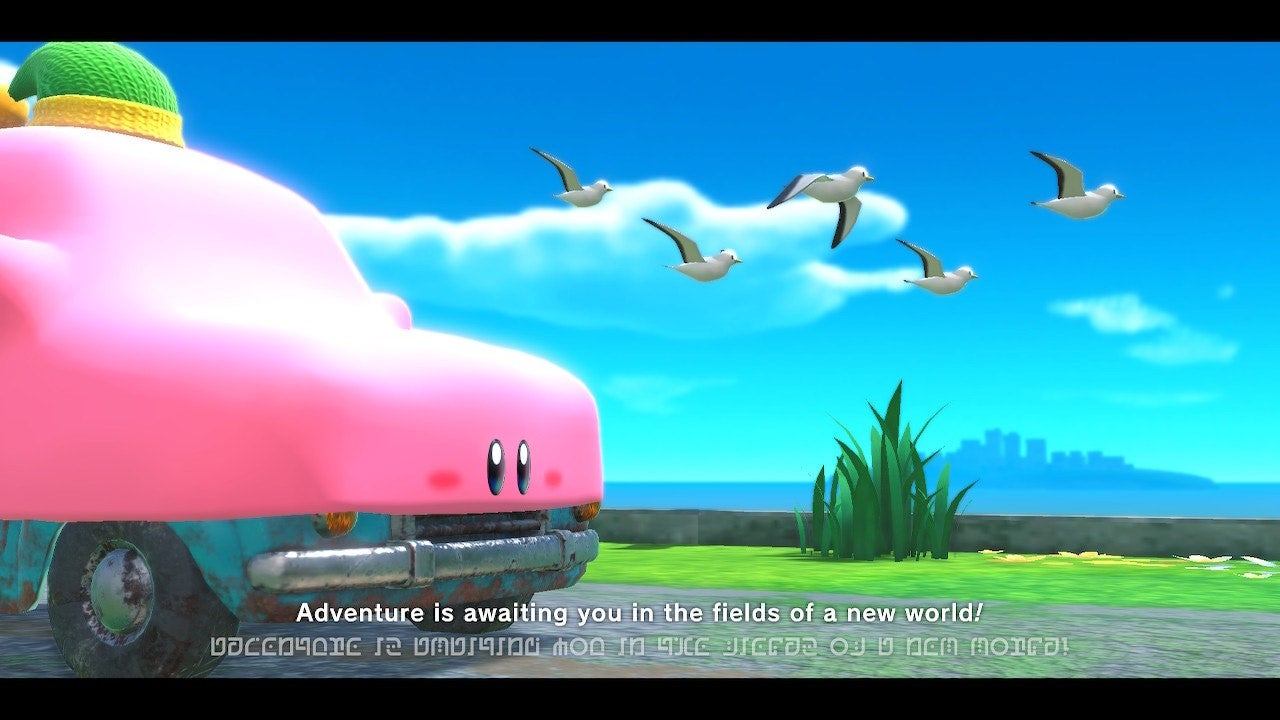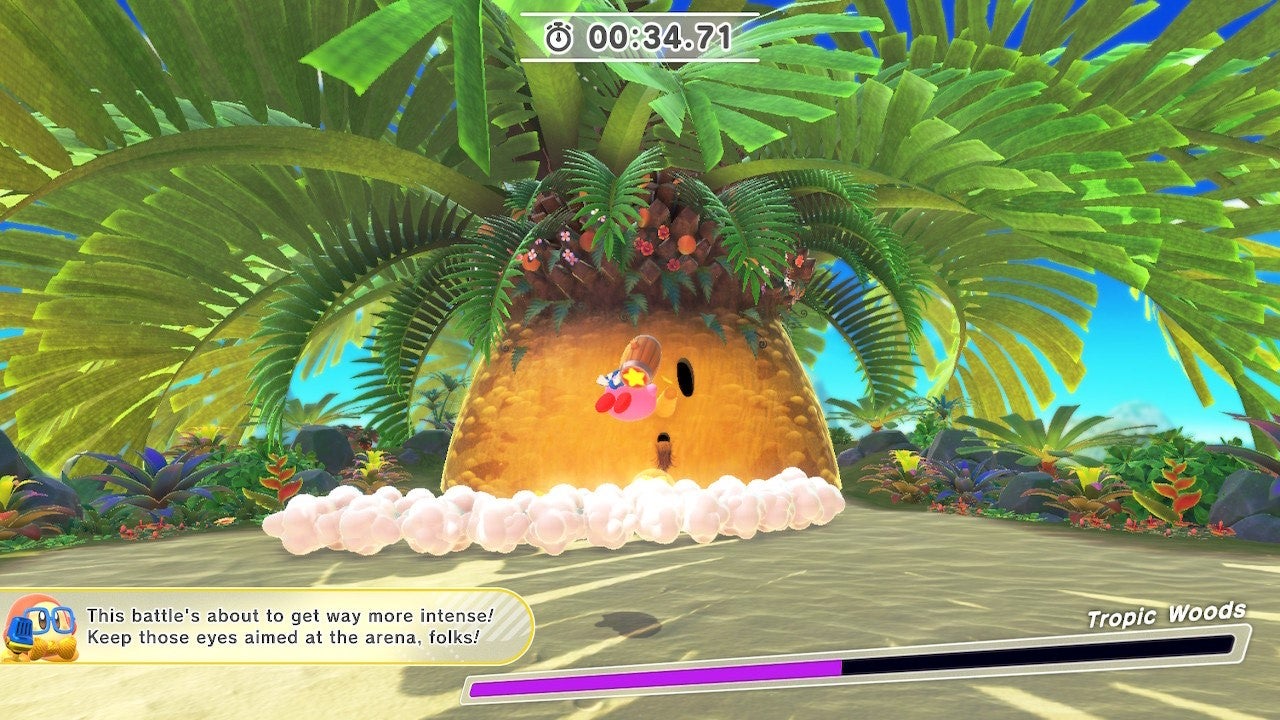Such effortlessness might be boring, were it not for the effort put in by the designers at HAL Laboratory to keep presenting new ideas to keep you entertained. Kirby, at its best, is a procession of new toys to tinker with, new mini-games to be distracted by and new enemies to ingest so that you might take on their powers. They’re bountiful things, the maximalist approach part of their magic. Which goes some way to explain Kirby and the Forgotten Land’s new mechanic, a simple case of asking what if Kirby could swallow up even more? Mouthful mode sees you swallow up whole vending machines that spit out cans, a big bouncing ball of water that spurts jets, and - as you’ve no doubt seen - an entire actual car so that you can zoom from point to point. Yes, this Kirby is also a racing game. Mouthful Mode is one big idea in a game that’s bustling with lots of other little ones, many of them ushered in by the fact this is Kirby’s first real 3D outing to date - something quite remarkable, really, given how long the series has been running. The results are a very different feeling Kirby game to what’s gone before, even if there’s the familiarity and fuzzy feeling of playing a 3D platformer that’s as generous and inventive as anything from the genre’s golden era. The Forgotten Land plays an awful lot like what might have happened had our collective wishes for a 3D Kirby been answered back in the GameCube day. Which is high praise, of course - indeed, if you’re of a certain bent, there’s no praise higher. Kirby and The Forgotten Land’s a gloriously traditional platformer, and contrary to some beliefs around its reveal it’s not open world, or even semi open world. It is, instead, a collection of self-contained levels, all selected via a slowly unfurling world map where they’re clustered in themes. There’s ice levels! Beach levels! Fairground levels! All, somewhat bizarrely, served up with light post-apocalyptic undertones that come with the Forgotten Land’s story (which I won’t spoil here beyond saying it’s a nice excuse to see some old favourites in a new context). The extra dimension allows HAL Laboratory to stuff each of those levels with oodles of secrets; indeed, the challenge isn’t so much about surviving each level - even on the ‘Wild Mode’ harder setting this’ll be one of the easiest games you’ll encounter this year - but unearthing its secrets, poking around here and there with new abilities to see what treasures await. Hidden amidst each level are a number of Waddle Dees to be rescued, and beyond that are conditions to be met - find the secret container! Stand atop two trains! Suck up every poster! - to unlock even more, with a set number required to unlock each area’s boss encounter. It means replaying levels is something of a necessity, even if it’s never a chore. And those boss fights! They’re multi-stage affairs with as much imagination as found anywhere else, with a colosseum where you can indulge in them all over again or partake in a boss rush in the hub world of Waddle Dee Town you can return to. It’s here you’ll find a root beer tapper-esque mini-game that’s enjoyably taut, gacha units to fritter away the coins you’ve earned in-game on hundreds of collectibles and even a bed for Kirby to doze in. As ever, it’s the remarkable detail in otherwise unremarkable features that makes it all so compelling - a cutscene viewer, for example, that’s an actual cinema where an usher instructs you to take your seat while the projector spools up. Such are the diversions in a Kirby game that can run surprisingly deep, with blueprints for evolved weapon types to be found, unlocked by earning stars won in the smaller gauntlet-like treasure runs interspersed between each level proper. A Kirby game with crafting! Well, not quite - as ever it’s done with the lightest of touches, offering a gentle push to go back and explore past levels rather than encouraging a full-on grind. The end result is a more generous Kirby than I’ve played before, and even once it’s all over it’s a Kirby that offers more excuses to go back than I can recall. Partly that’s to unearth its secrets, to drag a partner through in co-op that’s available throughout or just to spend a while longer in its warming radiance. Kirby and the Forgotten World is one of those games that can lift your mood within seconds, a power apparent from its delightful opening song - ‘stuff your belly and nap awhile’ - through to its outrageous climax. It’s tempting to say that with The Forgotten Land Kirby has graduated from second-tier character to starring in a game that rivals Mario in its pomp, but that’s not quite the case. The many ideas and new abilities are never quite as fully rounded as in obvious analogue Super Mario Odyssey; the polish, likewise, isn’t quite there (and neither is the framerate, it’s worth pointing out, with the action sitting around 30fps rather than the more fluid modern Marios). That all seems to be by the by, though. Like its predecessors, Kirby and the Forgotten Land’s an open-armed thing, and now more than ever before it’s a game that’s for absolutely everyone, the move to 3D platforming perhaps the most significant step forward in the series’ history. This is an absolute hug of a game, and quite likely Kirby’s best outing yet.



